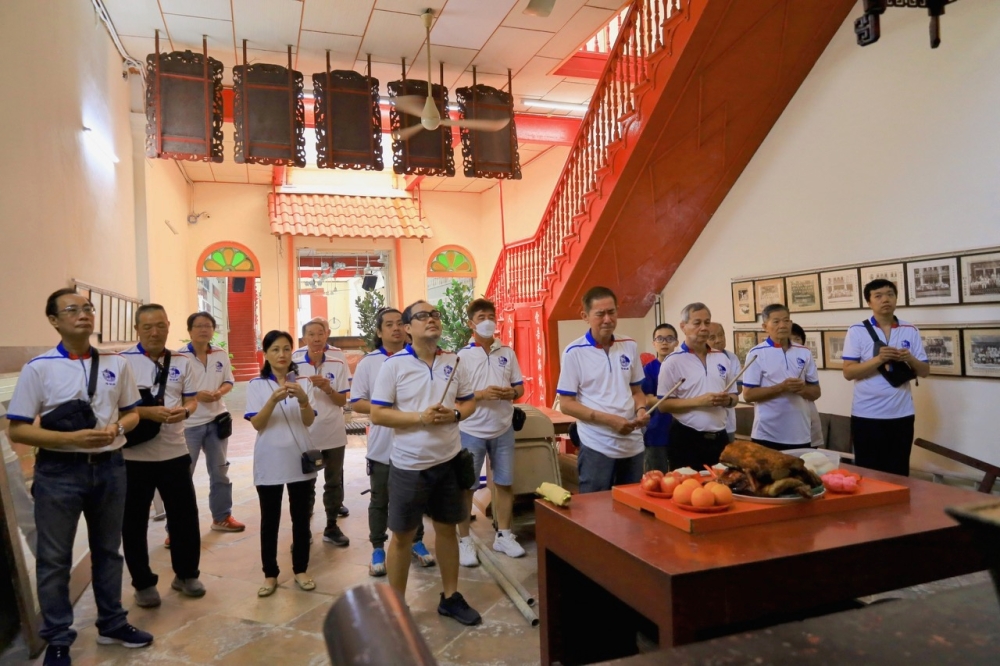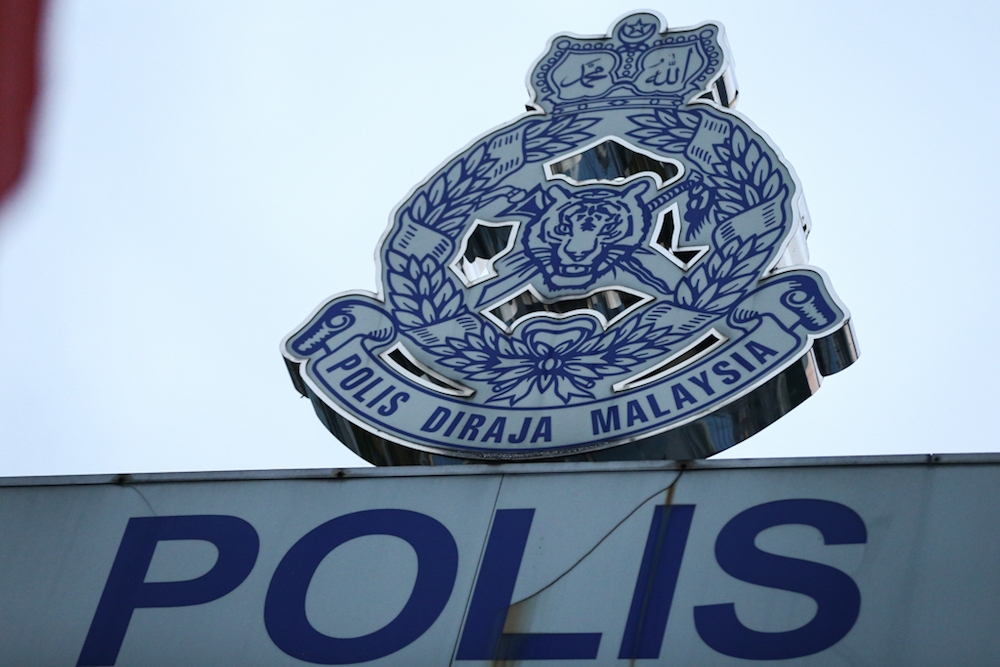GEORGE TOWN, July 6 – Standing on its own and stretching 60.96 metres (about 200 feet) from Chulia Street to Kampung Malabar, the Nam Hooi Wooi Koon is the oldest Nanhai association in the world outside of China.
The association, formed by immigrants from Nanhai (Nam Hooi) district in Guangdong province in China, was established in 1828 but the building was only constructed in 1904.
Among the notable figures from Nanhai are martial artist, physician and folk hero Wong Fei-Hung and martial artist Ip Man.
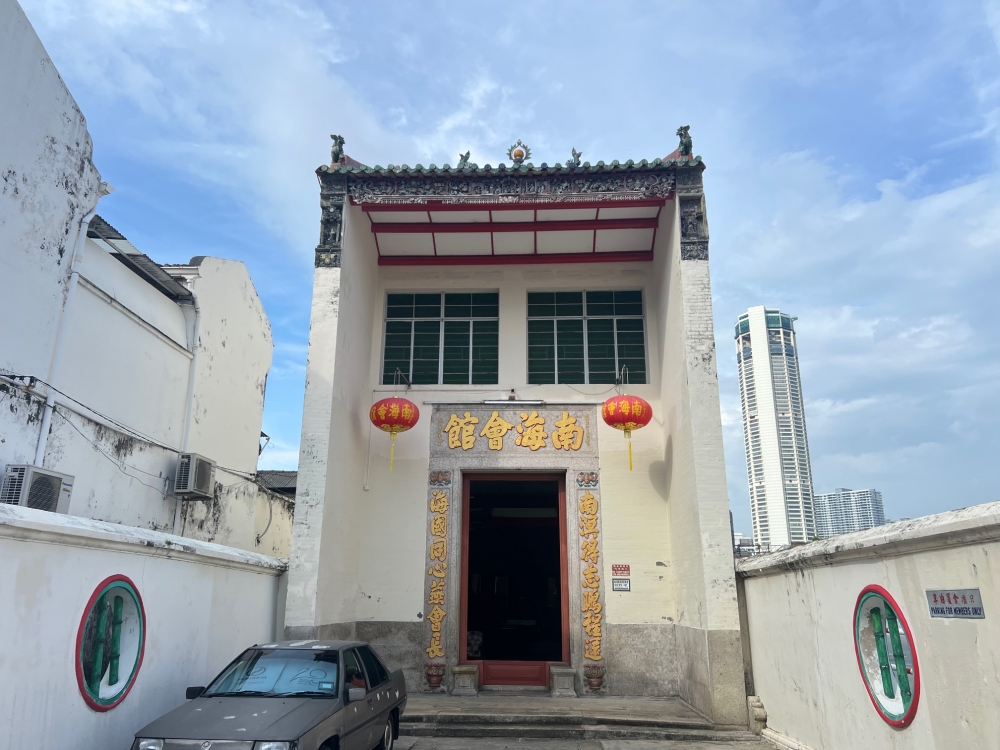
Nam Hooi Wooi Koon was built in 1904 and stretches 200 feet from Chulia Street to Kampung Malabar. — Picture by Opalyn Mok
There are over 400,000 people from Nanhai overseas with 60 overseas Nanhai associations worldwide.
The Nanhai community in Penang worked in trade, finance and the food industry in the heritage area where the association building now stands.
The association served as a hub to welcome new immigrants from Nanhai and helped them arrange lodging and employment.
It was a community gathering space that arranged for traditional Chinese medicine doctors to provide medical assistance, provide help with funeral arrangements and care for senior citizens without family here.
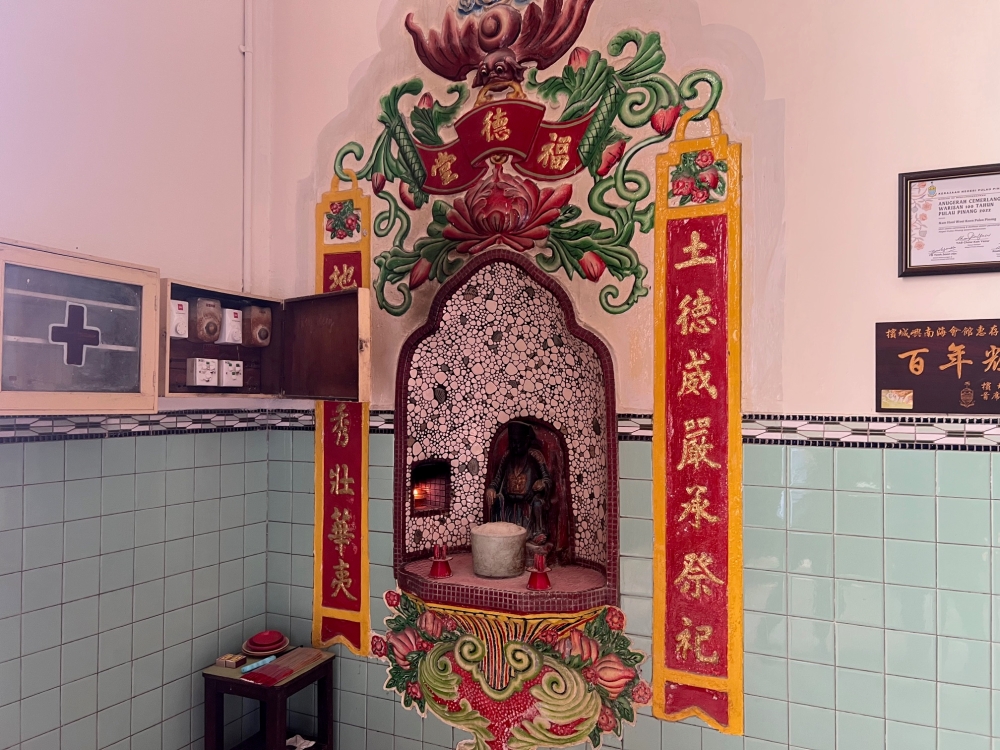
The altar for Tudi Gong, the Earth deity. — Picture by Opalyn Mok
The Nanhai community members in Penang were also the founding leaders of the Kong Hock Keong Temple, founding members of Lam Wah Ee Hospital and managing directors of the Ng Fook Tong School.
When it was initially established, the association had between 3,000 to 4,000 members but today, it is down to about 1,000 with only a few hundred active members.
The building may look plain from afar but upon closer look, the roof features intricate carvings of flowers and scenes from folk tales while on the roof top, sculptures of a pair of fish dragons stand with a pearl in the centre.
Listed as a Category 1 heritage building, the front entrance has the words Nam Hooi Wooi Koon written in Cantonese moulded onto concrete and covered in gold leaf.
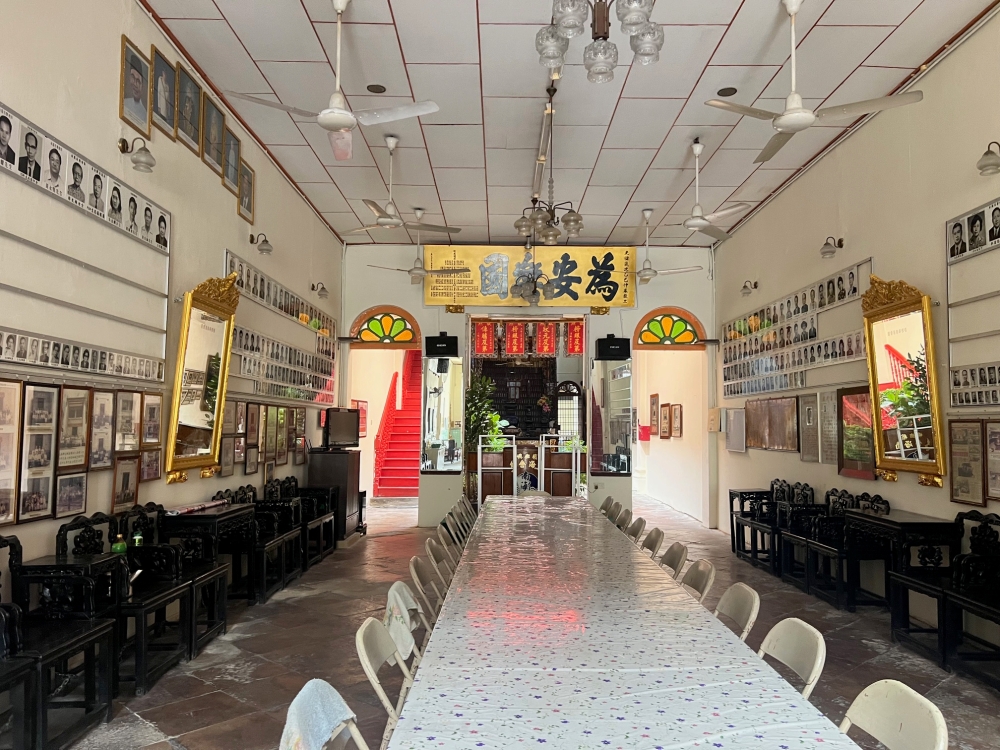
The long front hallway at Nam Hooi Wooi Koon with antique rosewood chairs and tea tables. — Picture by Opalyn Mok
On either side of the entrance are seven-lettered couplets composed by Lingnan calligrapher, Lin Qihan, in 1904 that read:
南溟得志鹏程远海国同心燕会长
南溟得志鹏程远 海国同心燕会长
It loosely translates to “With ambition in the southern seas, the roc soars far; unity across maritime lands with harmonious gatherings.”
Inside, on the left wall, is an altar built into the wall for Tudi Gong (the Earth Deity) with colourful paintings surrounding the altar.
Inside, the main hall stretches far into the back while there are stone tablets on the right with a list of names of founding members who donated to the association back in the 19th century.
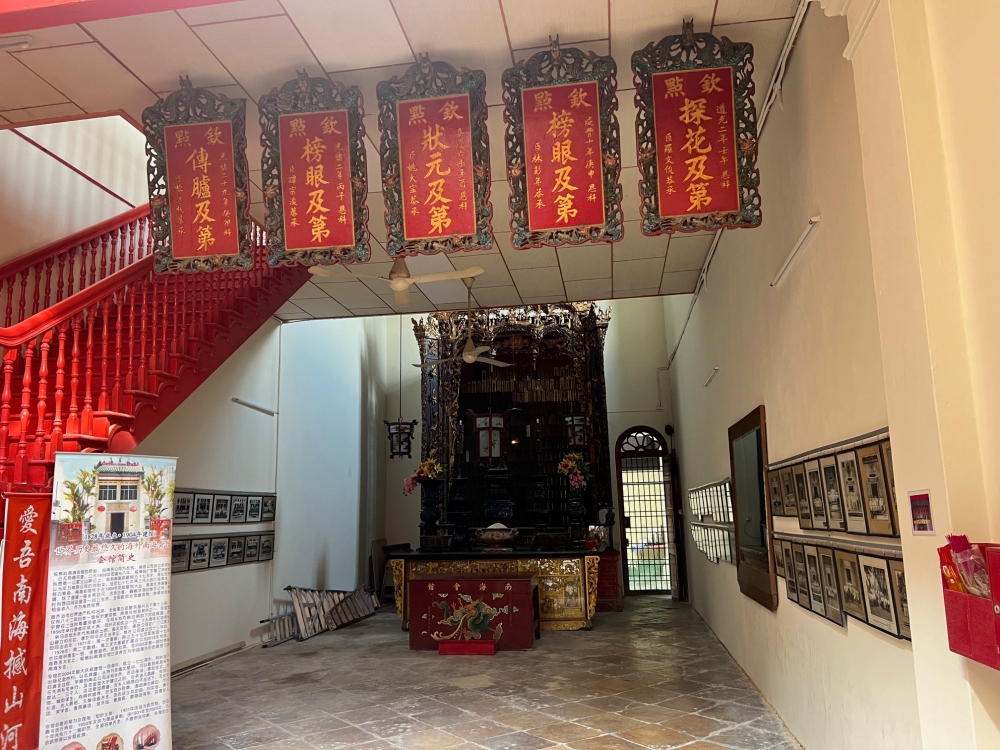
The inner hall where a high ancestral altar with intricate carvings is located. Hanging from the ceiling are five red plaques that were awarded to outstanding scholars in Nanhai in China who got into the honorary list of the Qinghai Imperial Examinations. — Picture by Opalyn Mok
In the inner hall right after an airwell, stands a high altar with golden carvings of various scenes of folk tales and deities embellishing it.
The wooden altar is more than two storeys high and is filled with ancestral tablets of deceased members.
Hanging down from the ceiling at the inner hall are five red plaques that were awarded to outstanding scholars in Nanhai in China who got into the honorary list of the Qinghai Imperial Examinations.
These scholars were believed to have held senior positions such as ministers in the Imperial Palace so these plaques were sent to the association as a showcase of the achievements of the Nanhai people.
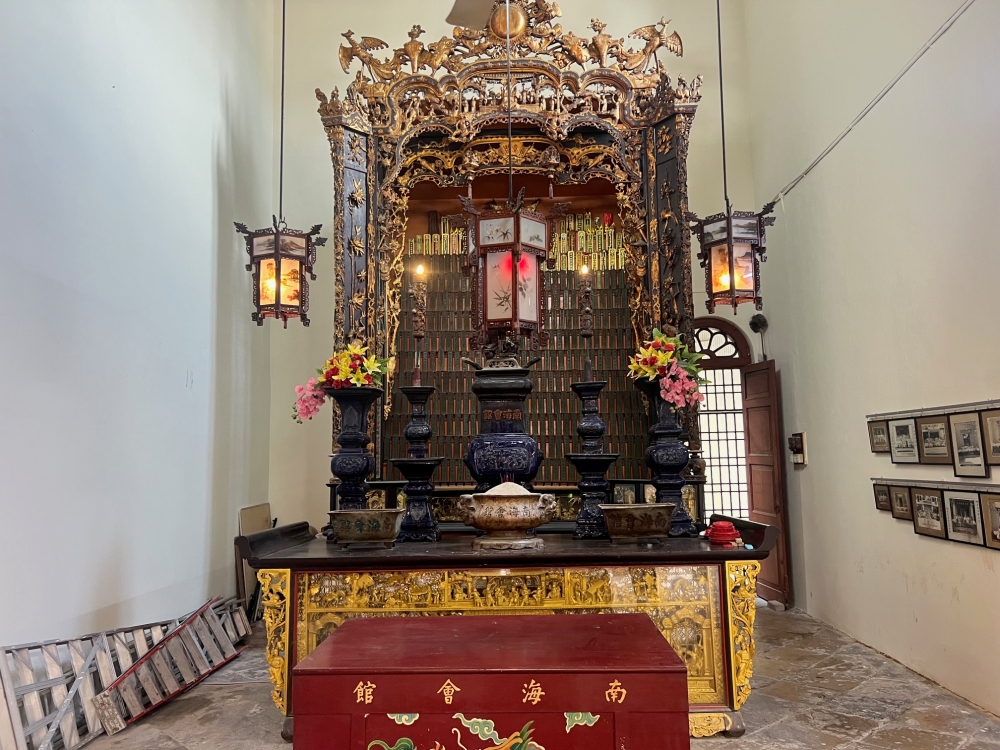
The wooden altar is more than two storeys high and is filled with ancestral tablets of deceased members. — Picture by Opalyn Mok
At the rear of the building, outside its back door facing the Kampung Malabar road, is a stone altar for the Sheji Zhi Shen (the deity of earth and grain) and Bai Hu Ye (the white tiger deity).
The Sheji Zhi Shen is believed to grant wishes for good weather and bountiful harvest while the Bai Hu Ye is believed to bring good luck.
According to association secretary for Malay and English Affairs Loh Ji Yuan, the area is also where the traditional ritual of “beating the petty person” (da siew yan) is performed during Jingzhe (Awakening of Insects Day).
There are additional ancestral shrines for members to place ancestral tablets upstairs in the central and rear halls.
The front hall has been converted into a karaoke room and meeting room.
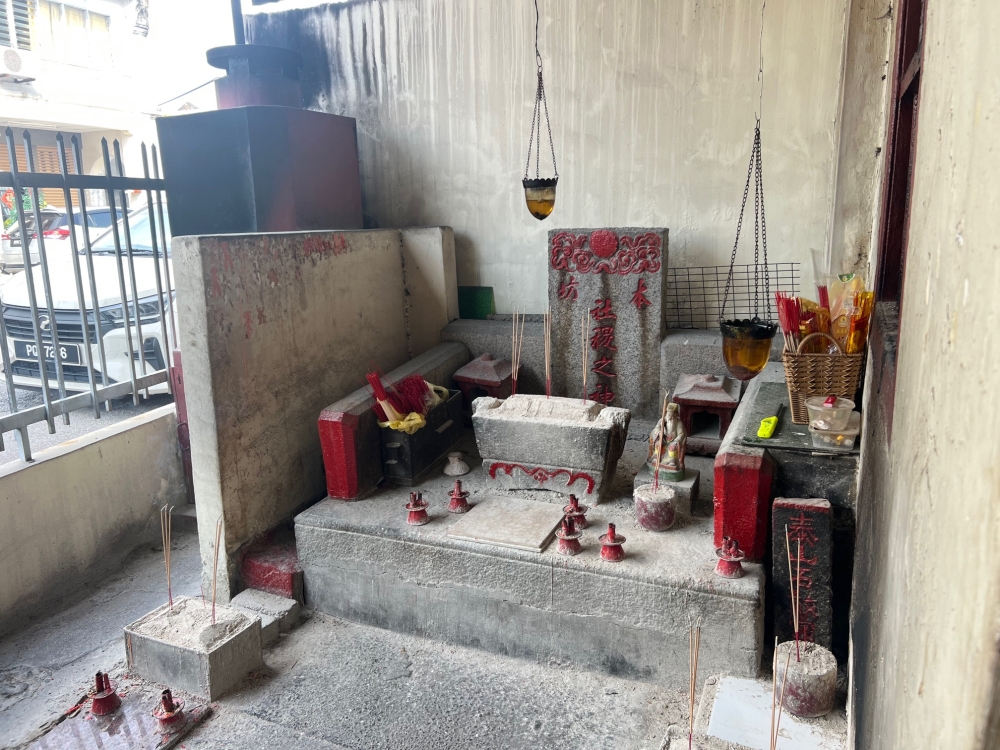
The stone altar for the Sheji Zhi Shen (the deity of earth and grain) and Bai Hu Ye (the white tiger deity). — Picture by Opalyn Mok.
Loh said the association, like many other traditional clan associations, is facing the challenge of attracting young members.
As the membership was patriarchally lineage-based, the association has revised this to include children of female members.
Academic awards that were previously available to children only on the father’s side are also now available to children of a Nam Hooi woman, he said.
”We are also organising various cultural activities to attract young members such as New Year gathering, Lantern Celebration, Spring and Autumn Ancestral Rites, Mid-Autumn Dinner, Dragon Boat Festival events, and our association anniversary,” he said.
He said there is a singing club open to members of all ages.
”We have also introduced other modern activities such as pickle-ball sessions and partnered with local schools and other clans to help children learn about their roots,” he said.
He said one of the upcoming events is a Cantonese opera dinner at Shang Wu School in October.
”Events like these celebrate our heritage, strengthen community bonds, and keep traditions such as Cantonese opera alive for the next generation,” he said.
The Nam Hooi Wooi Koon is among eight heritage buildings that will open its doors to the public on July 7 under the Historic Building Open House programme in conjunction with Penang heritage celebrations.


